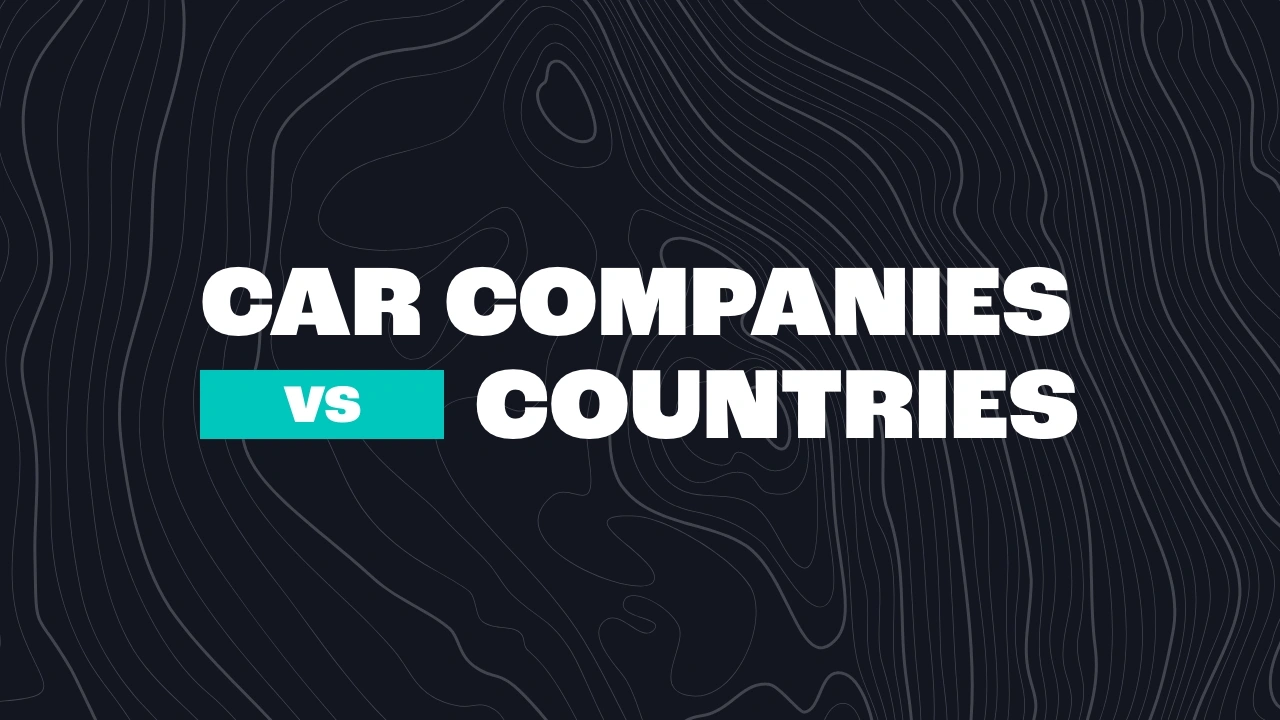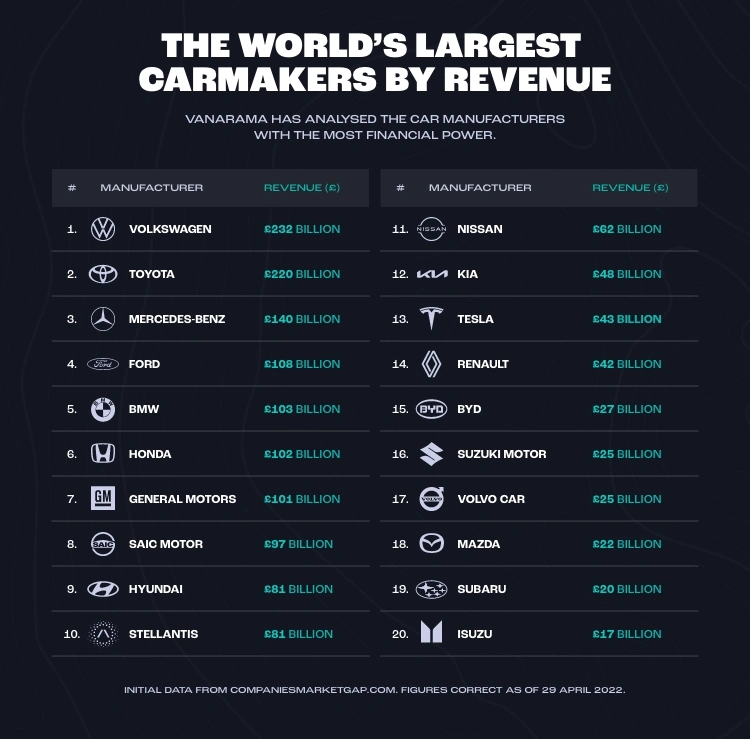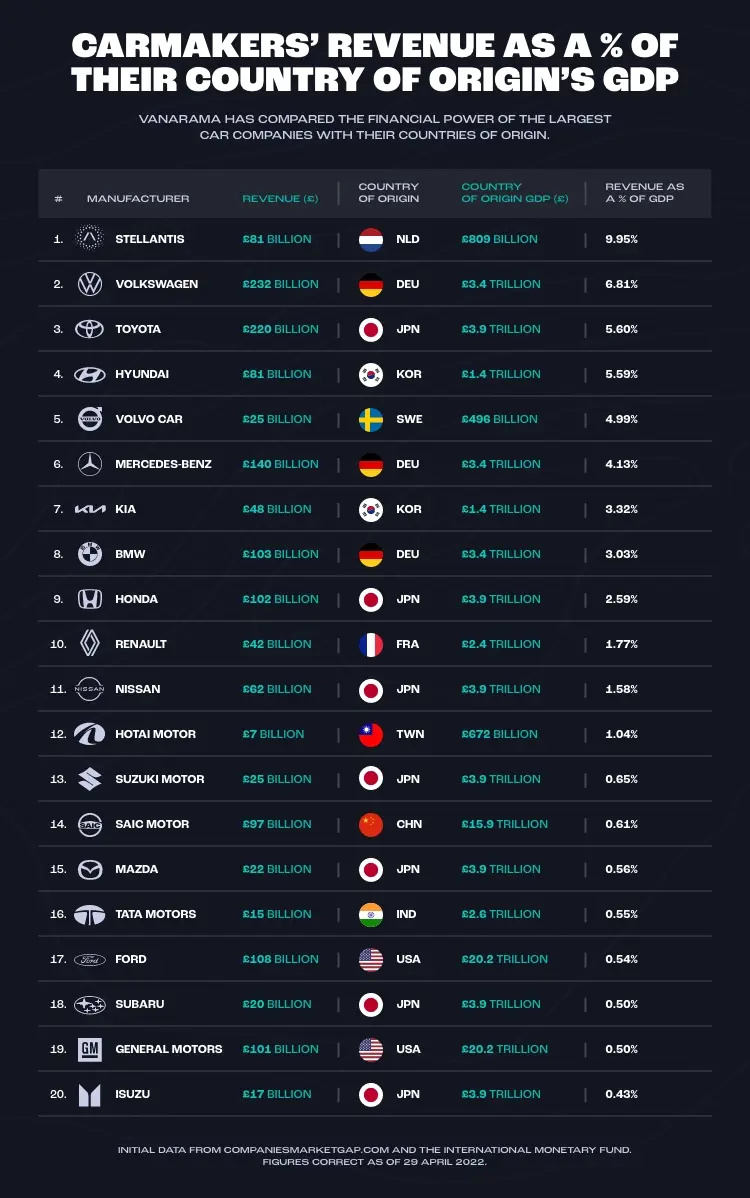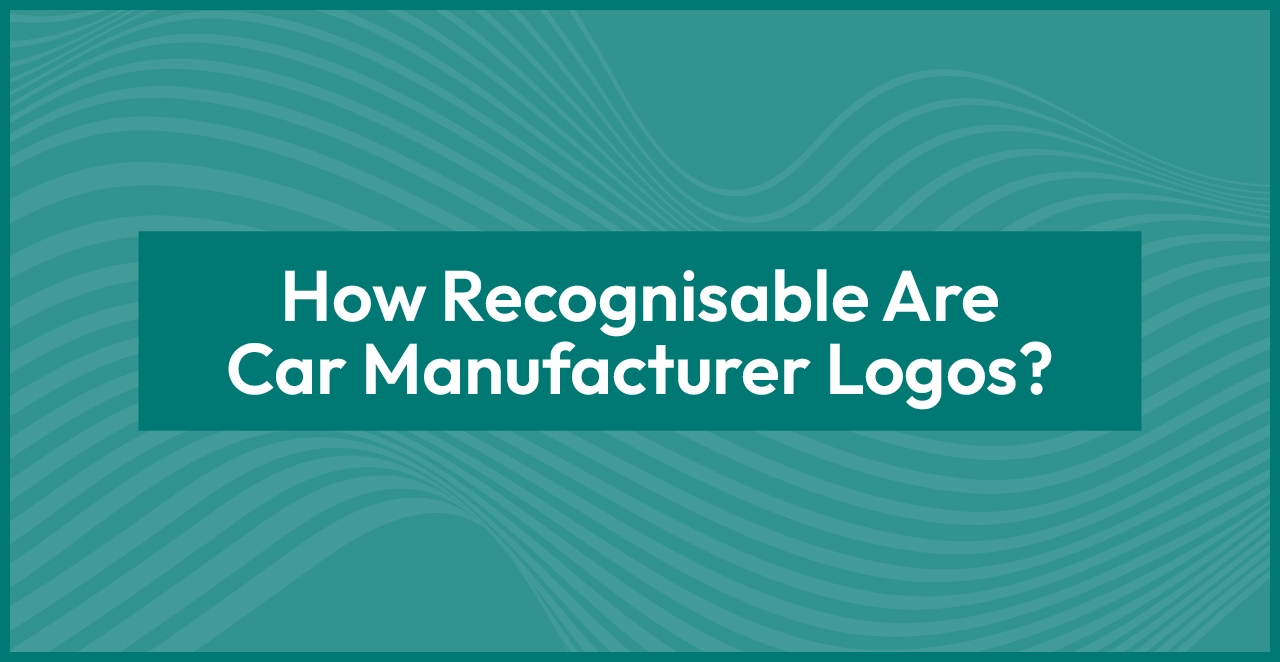Power – financial and influential – once sat exclusively with kings, queens and governments. But now, anyone or anything with enough funding stands a chance at tipping the balance in their favour.
The ever-growing social media platforms are just one example of that, but car manufacturers are also throwing their hat in the ring. Not least through Tesla CEO, Elon Musk, whose immense wealth has put his company front and centre on the global electrification of motoring.
Testing that balance, Vanarama has compared the revenues of the most successful carmakers with the gross domestic product (GDP) of 196 countries – to find out which manufacturers wield more power than you think.
Volkswagen Can Outspend Three Quarters Of Countries
Volkswagen has greater spending power than 148 countries in our research – more than three quarters (76%) of our database. And not just the smallest nations. Generating £232 billion in revenue, the German builder has greater financial influence than New Zealand (£206 billion in GDP), Portugal (£201 billion) and Qatar (£180 billion).
In fact, you could combine the GDP of the 58 countries at the bottom of the table and still not surpass VW’s wealth – including the likes of Moldova (£11 billion), The Bahamas (£10 billion) and Kosovo (£8 billion).
Toyota and Mercedes-Benz complete the podium, with revenues of £220 billion and £140 billion respectively. That means Toyota is just behind VW, with more financial power than 147 countries (75%), while Merc can outdo 137 countries (70%). This is especially impressive for Merc, a premium name outperforming voluminous brands.
Lamborghini (£2 billion in revenue) and Aston Martin (£1 billion) are among the more recognisable names in the bottom 15 of the revenue results, sitting just above American EV maker Rivian, on £40 billion in revenue. However, the latter of those may quickly rise the rankings – touted by some as the ‘next Tesla’, the firm is providing Amazon with 100,000 vans and is gaining traction with its R1T all-electric SUV, a model that only went into production in late 2021.
Tesla Sits Just Outside The Top Ten On Revenue
Some might be surprised to see Tesla, a manufacturer driving the switch to electric cars, sitting in 13th place on revenue. But that’s no small feat, with Musk’s company generating £43 billion a year – more than the likes of longstanding brands such as Renault (£42 billion) and Volvo (£25 billion).
Such is the scale of the USA’s GDP (just over £20 trillion), however, that Tesla’s financial power represents only 0.21% of that figure. Compatriots Ford and General Motors perform better, with 0.54% and 0.5% respectively.
Super-Sized Stellantis Earns 10% Of Holland’s GDP
Stellantis, a relatively new name in the automotive industry, comprises 16 car brands – from European household names like Vauxhall and Citroen to American manufacturers Dodge and Chrysler. There’s even room for the luxury badges of Maserati and Alfa Romeo.
So it’s little wonder that the Dutch multinational’s revenue is so high in comparison to its country of origin’s wealth. Stellantis’ £81 billion revenue makes up a huge 9.95% of the Netherlands’ GDP (£810 billion). However, that is partly helped by the 18 other countries with a higher GDP than Holland.
Close behind is VW, with its £232 billion in revenue making up 6.81% of Germany’s GDP (£3 trillion). Toyota takes third, thanks to its £220 billion revenue accounting for 5.60% of Japan’s GDP (£4 trillion).
The UK Scores Poorly On Revenue As A % Of Country GDP
Aston Martin is the only UK manufacturer to make the list, sitting way down in 32nd place. With a revenue of just over £1 billion, the luxury brand makes up just 0.04% of the UK’s GDP – £3 trillion.
That’s to be expected, though, as such carmakers don’t operate on high-volume production like Volkswagen and Toyota – they instead produce much more specialised vehicles for a particular audience. The £190,000 DBX 707, for example, is the world’s most powerful luxury SUV.
Similarly, Ferrari – perhaps the first name that springs to mind when thinking of top-end sportscars – doesn’t sit much higher on the table. The Maranello-based manufacturer accounts for only 0.24% of Italy’s GDP (£2 trillion), with a revenue of just under £4 billion.
Methodology
The publicly traded car manufacturers with the highest revenues, according to Companies Marketcap, were compared with worldwide data on GDP per country, to gauge the growing spending power and influence in the automotive industry. Figures correct as of 29 April 2022.
Find more automotive insight and features on the Vanarama blog, or browse our latest offers if you’re in the market for an upgrade.







